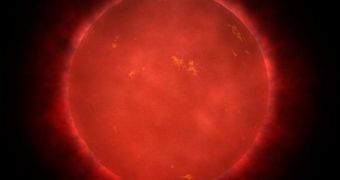Astronomers believe that billions, if not trillions, of Earth-like extrasolar planets may be orbiting red dwarf stars. These are the most common stars in the Universe, making up about 80 percent of all cosmic fireballs in the night sky.
In recent investigations, experts were also able to find 10-billion-year-old red dwarfs. This means that the stars had sufficient time to allow for exoplanets to form in their orbits, and to allow life to form on their companion bodies.
The Earth was able to produce lifeforms about 2 billion years after it fully solidified, some 2.5 billion years ago. Imagine how our planet would look like if life had 10 billion years to develop.
Unlike exoplanets orbiting red dwarfs, Earth will never grow to be 10 billion years old, simply because it will be engulfed by the Sun in about 5 billion years, and destroyed completely.
But life would have it much better off on other planets. Red dwarfs have only 8 to 60 percent the mass of the Sun, and they can also burn for a lot longer. Just like our star, they are powered by nuclear fusion, where hydrogen gas is burned to produce energy and helium.
The new focus on these rather common stars is the result of new observations possible with advanced telescopes such as the Keck Observatory in Hawaii. These instruments are able to peer deep within nearby elliptical galaxies.
In a recent study, Yale University astronomer Pieter van Dokkum used the Keck to look at 8 nearby elliptical galaxies, all of which are located between 50,000 and 300 million light-years away. The main conclusion of the research was that red dwarfs were more common than first thought.
“No one knew how many of these stars there were. Different theoretical models predicted a wide range of possibilities, so this answers a longstanding question about just how abundant these stars are,” van Dokkum explains, quoted by Daily Galaxy.
According to Harvard-Smithsonian Center for Astrophysics (CfA) expert Charlie Conroy, elliptical galaxies contain up to 20 times more red dwarfs that massive spiral galaxies such as the Milky Way do.
Van Dokkum says that the higher number of such stars also implies that there are more exoplanets in orbit around them than previously calculated.
“Overall, this is excellent news for planet hunters. This further buttresses the case that the first truly habitable world we find will likely by around a nearby M dwarf,” adds Carnegie Institution for Science expert Alan Boss.
The expert, who is a part of the NASA Kepler planet-hunting telescope mission, was not a part of the new investigation.

 14 DAY TRIAL //
14 DAY TRIAL //